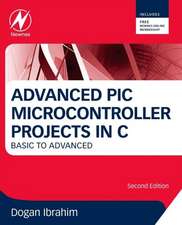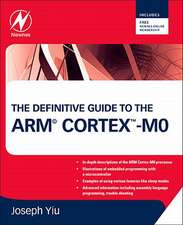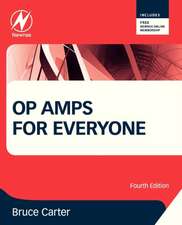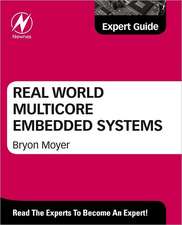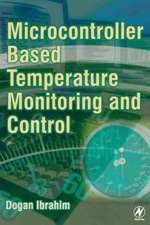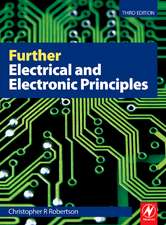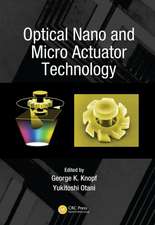Lead-Free Electronic Solders: A Special Issue of the Journal of Materials Science: Materials in Electronics
Editat de KV Subramanianen Limba Engleză Paperback – 4 noi 2010
The worldwide multi-facetted research efforts to arrive at suitable solutions, especially as the deadline for implementation of lead-free electronic solders approaches, have resulted in an exhaustive number of research papers in several reviewed scientific journals. Similarly there have been presentations in several national and international meetings of various technical societies. It is impossible for any researcher or student to be aware of all the materials that have been, and are being, published in these many different sources, so it becomes essential to have most of the relevant and currently available information presented in a single publication. With this goal in mind the important issues encountered in the lead-free electronic solder area were identified, and researchers recognized for their significant scientific contributions in those areas were invited to write articles on those topics. They were asked to address the importance of a given issue, the current status of understanding and available solutions, the problems that still need to be tackled and suggestions for potential approaches to do so.
The chapters are organized around the following subject areas: themodynamics and phase diagrams, solder developments, processing issues, mechanical property considerations, effects of thermal excursions (TMF), electromigraion, whisker growth, tin pest, and industrial perspectives (consumer electronics, and high-end high reliability applications).
This material originally appeared in a special issue of Journal of Materials Science: Materials in Electronics. Because this journal may not be a regular source of scientific information foracademic researchers in fields other than Materials Science and those in industry, and to provide wider awareness of the current status of lead-free electronic solders to those persons active in the area but who are not regular readers of the Journal, these articles are being reprinted in book form.
| Toate formatele și edițiile | Preț | Express |
|---|---|---|
| Paperback (1) | 1225.31 lei 6-8 săpt. | |
| Springer Us – 4 noi 2010 | 1225.31 lei 6-8 săpt. | |
| Hardback (1) | 1235.43 lei 6-8 săpt. | |
| Springer Us – 30 apr 2007 | 1235.43 lei 6-8 săpt. |
Preț: 1225.31 lei
Preț vechi: 1494.28 lei
-18% Nou
Puncte Express: 1838
Preț estimativ în valută:
234.49€ • 243.42$ • 195.53£
234.49€ • 243.42$ • 195.53£
Carte tipărită la comandă
Livrare economică 22 martie-05 aprilie
Preluare comenzi: 021 569.72.76
Specificații
ISBN-13: 9781441943026
ISBN-10: 1441943021
Pagini: 384
Ilustrații: VI, 378 p.
Dimensiuni: 178 x 254 x 20 mm
Greutate: 0.66 kg
Ediția:Softcover reprint of hardcover 1st ed. 2007
Editura: Springer Us
Colecția Springer
Locul publicării:New York, NY, United States
ISBN-10: 1441943021
Pagini: 384
Ilustrații: VI, 378 p.
Dimensiuni: 178 x 254 x 20 mm
Greutate: 0.66 kg
Ediția:Softcover reprint of hardcover 1st ed. 2007
Editura: Springer Us
Colecția Springer
Locul publicării:New York, NY, United States
Public țintă
ResearchCuprins
Thermodynamics and phase diagrams of lead-free solder materials.- Phase diagrams of Pb-free solders and their related materials systems.- The effects of suppressed beta tin nucleation on the microstructural evolution of lead-free solder joints.- Development of Sn-Ag-Cu and Sn-Ag-Cu-X alloys for Pb-free electronic solder applications.- Rare-earth additions to lead-free electronic solders.- Compression stress-strain and creep properties of the 52In-48Sn and 97In-3Ag low-temperature Pb-free solders.- Sn-Zn low temperature solder.- Composite lead-free electronic solders.- Processing and material issues related to lead-free soldering.- Interfacial reaction issues for lead-free electronic solders.- Microstructure-based modeling of deformation in Sn-rich (Pb-free) solder alloys.- Deformation behavior of tin and some tin alloys.- Mechanical fatigue of Sn-rich Pb-free solder alloys.- Life expectancies of Pb-free SAC solder interconnects in electronic hardware.- Assessment of factors influencing thermomechanical fatigue behavior of Sn-based solder joints under severe service environments.- Electromigration statistics and damage evolution for Pb-free solder joints with Cu and Ni UBM in plastic flip-chip packages.- Electromigration issues in lead-free solder joints.- Stress analysis of spontaneous Sn whisker growth.- Sn-whiskers: truths and myths.- Tin pest issues in lead-free electronic solders.- Issues related to the implementation of Pb-free electronic solders in consumer electronics.- Impact of the ROHS directive on high-performance electronic systems.- Impact of the ROHS Directive on high-performance electronic systems.
Recenzii
From the reviews:
"The main part of the text is devoted to soldering materials with all the most common alloys illustrated and supported with mechanical data and phase diagrams. … there is a lot of real value on the informative to research and process engineers who want to go deeper into the subject." (Bob Willis, Electronics Production World, August, 2007)
"The main part of the text is devoted to soldering materials with all the most common alloys illustrated and supported with mechanical data and phase diagrams. … there is a lot of real value on the informative to research and process engineers who want to go deeper into the subject." (Bob Willis, Electronics Production World, August, 2007)
Textul de pe ultima copertă
In the last few decades the effect of lead contamination on human health has received significant attention. Based on such concerns, elimination of lead from ceramic glaze, paint, plumbing etc. has been legislated and implemented. However, until recently, solders used in electronics, based on suitability and knowledge-base developed over a long period of time, remained lead-based. Successive rapid advances in microelectronic devices in recent decades make them obsolete within a very short period after their introduction resulting in significant quantities of electronic wastes in landfills. Leaching of toxic lead from such electronic wastes can result in contamination of the human food chain causing serious health hazards. As a consequence, several European and Pacific Rim countries have passed legislations warranting elimination of lead from electronic solders by fast approaching deadlines. Global economic pressures brought on by such legislations have resulted in a flurry of research activities to find suitable lead-free substitutes for the traditional leaded electronic solders.
The worldwide multi-faceted research efforts to arrive at suitable solutions, especially as the deadline for implementation of lead-free electronic solders approaches, have resulted in an exhaustive number of research papers in several reviewed scientific journals. Similarly there have been presentations in several national and international meetings of various technical societies. It is impossible for any researcher or student to be aware of all the materials that have been, and are being, published in this area. So it becomes essential to have most of the relevant and currently available information in a single source.
With this goal in mind, the important issues that are encountered in the lead-free electronic solder area were identified, and researchers recognized for their significant scientific contributions in those areas, were invited to write articles onthose topics. They were asked to address the importance of a given issue, the current status of understanding and available solutions, the problems that still need to be tackled and suggestions for potential approaches to do so.
This book contains the papers that were invited for a special issue of Journal of Electronic Materials: Materials in Electronics. Because this journal may not be a regular source of scientific information for academic researchers in fields other than Materials Science and those in industry, and to provide wider awareness of the current status of lead-free electronic solders to those persons active in the area but who are not regular readers of the Journal, these articles have been reprinted in this book.
The worldwide multi-faceted research efforts to arrive at suitable solutions, especially as the deadline for implementation of lead-free electronic solders approaches, have resulted in an exhaustive number of research papers in several reviewed scientific journals. Similarly there have been presentations in several national and international meetings of various technical societies. It is impossible for any researcher or student to be aware of all the materials that have been, and are being, published in this area. So it becomes essential to have most of the relevant and currently available information in a single source.
With this goal in mind, the important issues that are encountered in the lead-free electronic solder area were identified, and researchers recognized for their significant scientific contributions in those areas, were invited to write articles onthose topics. They were asked to address the importance of a given issue, the current status of understanding and available solutions, the problems that still need to be tackled and suggestions for potential approaches to do so.
This book contains the papers that were invited for a special issue of Journal of Electronic Materials: Materials in Electronics. Because this journal may not be a regular source of scientific information for academic researchers in fields other than Materials Science and those in industry, and to provide wider awareness of the current status of lead-free electronic solders to those persons active in the area but who are not regular readers of the Journal, these articles have been reprinted in this book.
Caracteristici
Contributions are from world wide research leaders Comprehensive in scope Each chapter focuses on a single issue and addresses the current understanding of the subject, the problems that still need to be tackled and suggestions for potential approaches to do so Includes supplementary material: sn.pub/extras


